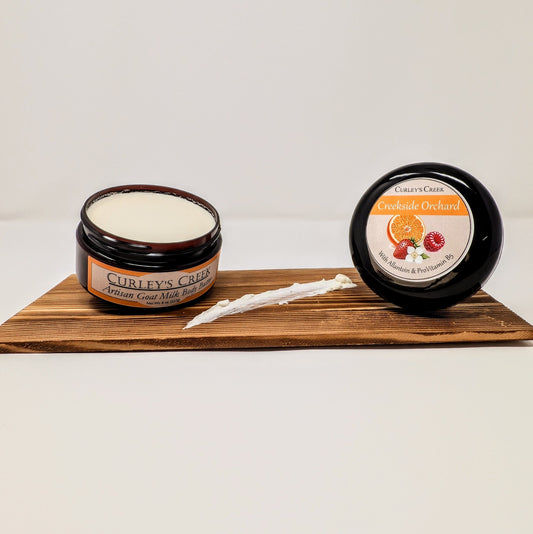What is Cold Process Soap?
 Handmade Soap Magic: Our Cold Process Journey
Handmade Soap Magic: Our Cold Process Journey
Hey folks, from Curley's Creek! Ever pick up a bar of rustic, handmade soap at a market and wonder how it’s made? You might see the term "cold process," and it sounds simple, but it's actually a fascinating mix of science, art, and maybe a little bit of farm ingenuity. It’s the traditional method we use to turn our fresh goat milk into the creamy, skin-loving bars we offer.
From Goat Milk Surplus to Soap Obsession
Our adventure started with our goats! We found ourselves with an abundance of rich, wonderful goat milk. Wanting to use everything our little Alabama farm provided, we researched ways to utilize the extra milk and stumbled upon soap making. Turning that liquid gold into beautiful, practical soap bars just felt right. We saw lovely "Cold Process Goat Milk Soap" and thought, "We can try that!"
What IS Cold Process Soap, Anyway?
In a nutshell, it's chemistry! You carefully combine:
- Fats/Oils: Like olive oil, coconut oil, shea butter.
- Lye (Sodium Hydroxide): Yes, that stuff! It's essential for the reaction, and you treat it with serious respect (safety gear is a MUST).
- Liquid: We use our Goat Milk (often frozen to control temps).
Mix them correctly, and saponification happens – the molecules transform into Soap and naturally occurring Glycerin. That glycerin is amazing for your skin because it draws in moisture; unlike many commercial bars where it's removed, handmade soap keeps all that goodness. The "cold" part just means we don't add external heat during this reaction, letting us be more creative with designs and potentially being gentler on those lovely oils.
The Learning Curve (and Laughs)
Learning cold process soap making involves more than just reading recipes. Respecting lye is non-negotiable. Then there's figuring out temperatures, and the mysterious moment called "trace" when everything thickens up. Let's just say "YouTube University" was attended frequently!
We certainly had our moments, like the time an eagerly anticipated fragrance oil decided to turn our perfectly blended soap batter into solid soap-on-a-stick instantly. Imagine frantically trying to glop cement into a mold – that was us! The resulting "rustic" (okay, maybe ugly) bar still got you clean, but lesson learned about testing fragrances!
The Waiting Game: Why Soap Needs to Cure
Once the soap is cut, you can't use it right away. Cold process soap needs to cure for 4-6 weeks. This allows excess water to evaporate (making a harder, longer-lasting bar) and ensures the saponification process is fully complete, resulting in the gentlest bar possible. Waiting requires patience, but it's worth it!
Why We Love It
Making cold process soap lets us choose every single ingredient, pouring care (and creamy goat milk!) into every small batch. It's a craft that combines science and creativity, connecting us to traditional methods and the resources of our farm.
So, next time you lather up with a handmade bar, remember the journey! There's a bit of farm life, careful chemistry, and maybe a funny story behind its creation.



